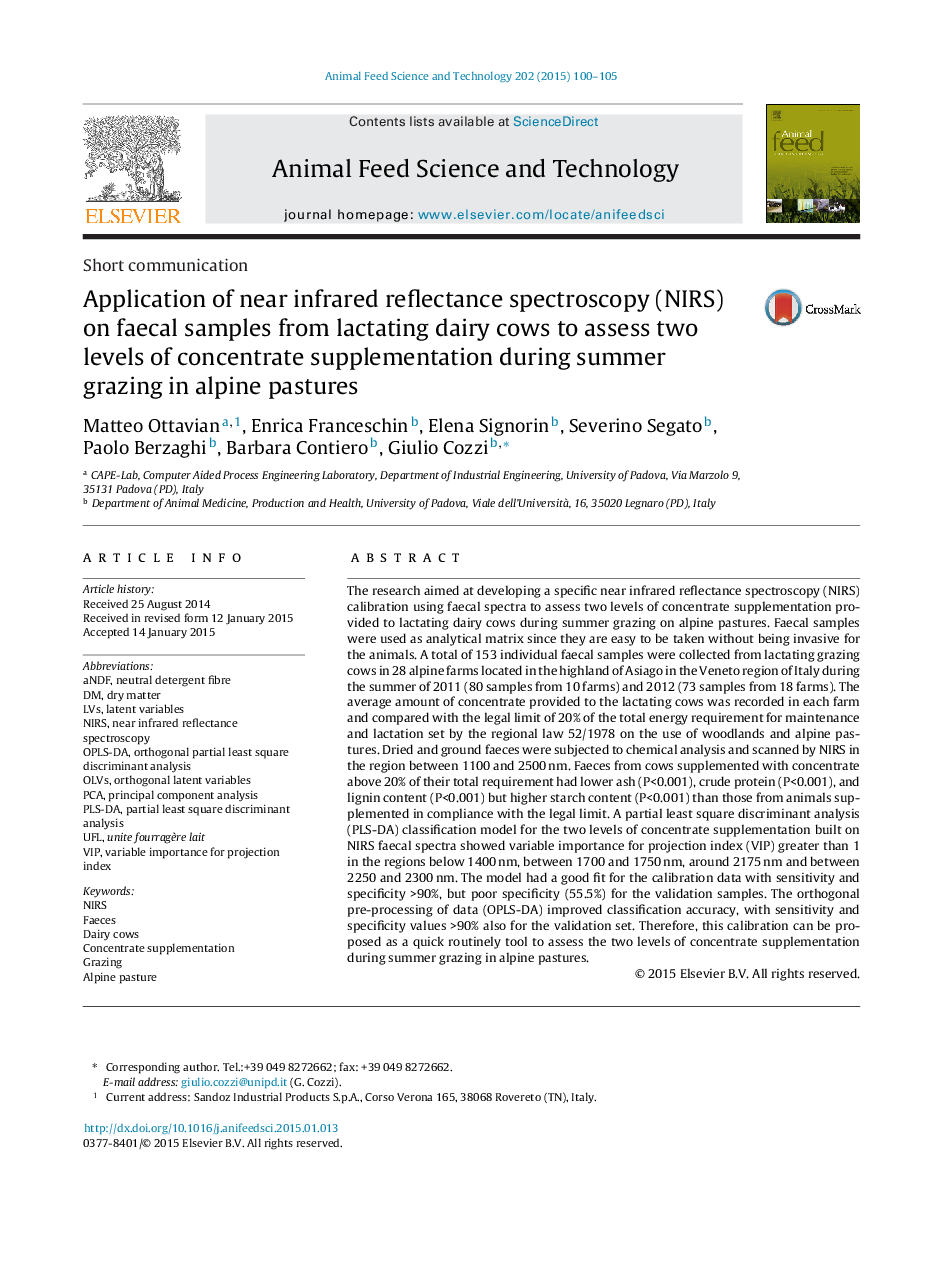| کد مقاله | کد نشریه | سال انتشار | مقاله انگلیسی | نسخه تمام متن |
|---|---|---|---|---|
| 2419426 | 1552383 | 2015 | 6 صفحه PDF | دانلود رایگان |

• High concentrate supplementation to grazing cattle can deteriorate alpine pastures.
• A NIRS calibration is developed on faecal samples collected from grazing dairy cows.
• The calibration is used to assess two levels of concentrate supplementation.
• The orthogonal pre-processing of spectral data improves classification accuracy.
The research aimed at developing a specific near infrared reflectance spectroscopy (NIRS) calibration using faecal spectra to assess two levels of concentrate supplementation provided to lactating dairy cows during summer grazing on alpine pastures. Faecal samples were used as analytical matrix since they are easy to be taken without being invasive for the animals. A total of 153 individual faecal samples were collected from lactating grazing cows in 28 alpine farms located in the highland of Asiago in the Veneto region of Italy during the summer of 2011 (80 samples from 10 farms) and 2012 (73 samples from 18 farms). The average amount of concentrate provided to the lactating cows was recorded in each farm and compared with the legal limit of 20% of the total energy requirement for maintenance and lactation set by the regional law 52/1978 on the use of woodlands and alpine pastures. Dried and ground faeces were subjected to chemical analysis and scanned by NIRS in the region between 1100 and 2500 nm. Faeces from cows supplemented with concentrate above 20% of their total requirement had lower ash (P<0.001), crude protein (P<0.001), and lignin content (P<0.001) but higher starch content (P<0.001) than those from animals supplemented in compliance with the legal limit. A partial least square discriminant analysis (PLS-DA) classification model for the two levels of concentrate supplementation built on NIRS faecal spectra showed variable importance for projection index (VIP) greater than 1 in the regions below 1400 nm, between 1700 and 1750 nm, around 2175 nm and between 2250 and 2300 nm. The model had a good fit for the calibration data with sensitivity and specificity >90%, but poor specificity (55.5%) for the validation samples. The orthogonal pre-processing of data (OPLS-DA) improved classification accuracy, with sensitivity and specificity values >90% also for the validation set. Therefore, this calibration can be proposed as a quick routinely tool to assess the two levels of concentrate supplementation during summer grazing in alpine pastures.
Journal: Animal Feed Science and Technology - Volume 202, April 2015, Pages 100–105